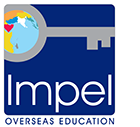As an F-1 student in the United States, it’s crucial to understand and adhere to the employment regulations to maintain your legal status. Here’s an overview of the employment options and their respective requirements:
1. On-Campus Employment:
- Eligibility: Available to F-1 students who are maintaining valid status.
- Work Hours: Up to 20 hours per week during academic terms; full-time during official school breaks (e.g., summer or winter holidays).
- Authorization: No special authorization is required, but you must continue to be enrolled full-time and make satisfactory academic progress.
2. Off-Campus Employment:
- Eligibility: Generally, F-1 students must complete at least one full academic year before qualifying for off-campus employment, unless emergent circumstances apply.
a. Curricular Practical Training (CPT):
- Purpose: Employment integral to your major, such as internships or cooperative education programs.
- Work Hours: Can be part-time (up to 20 hours per week) during academic terms or full-time during breaks.
- Authorization: Must receive approval from your Designated School Official (DSO) and obtain an updated Form I-20 before starting employment.
b. Optional Practical Training (OPT):
- Purpose: Employment directly related to your major area of study, available before (pre-completion) or after (post-completion) completing your program.
- Duration: Up to 12 months; an additional 24-month extension is available for certain STEM fields.
- Authorization: Requires filing Form I-765, “Application for Employment Authorization,” with U.S. Citizenship and Immigration Services (USCIS).
c. Severe Economic Hardship:
- Eligibility: Students facing unforeseen financial difficulties beyond their control, such as loss of financial aid or substantial fluctuations in currency value.
- Work Hours: Up to 20 hours per week during academic terms; full-time during breaks.
- Authorization: Must apply to USCIS for employment authorization by submitting Form I-765, along with supporting documentation of the hardship.
Important Considerations:
- Maintaining Status: Engaging in unauthorized employment is a serious violation of F-1 status and can lead to termination of your SEVIS record and potential removal from the United States. Always ensure you have the necessary authorization before starting any employment.
- Work Hour Limits: Exceeding the allowed work hours without proper authorization can jeopardize your F-1 status.
- Special Student Relief (SSR): In certain emergent circumstances, the Department of Homeland Security may grant SSR, temporarily suspending certain regulatory requirements for F-1 students, including employment restrictions. Eligibility and availability are determined based on specific situations.
Given the evolving nature of immigration policies, especially with recent political changes, it’s essential to stay informed about any new regulations that may affect your employment options. Regularly consult with your DSO and refer to official sources, such as the Department of Homeland Security and USCIS, for the most current information.



